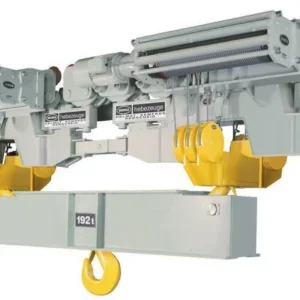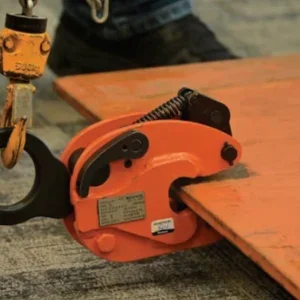
Wire rope is perhaps the most adaptable of the lifting media. It is used on power-operated hoists, winches and lifting and pulling machines, which use a gripping action to haul wire rope. In the case of winches and poweroperated hoists, the rope is stored on a drum, the capacity of which limits the available lifting height. Various constructions of wire rope are available to suit most conditions of use and the supplier’s advice should be sought as to the most suitable for the particular application.
Cut lengths of wire ropes are typically used for various applications where specific lengths of rope are needed and off-theshelf lengths are not available or would not work effectively or safely. In lifting and hoisting operations, shorter wire ropes can be employed for lifting heavy loads where precise lengths are required to fit the lifting equipment used, such as cranes, winches or hoists. In rigging applications, wire ropes are often cut to specific lengths to be used as slings or lifts. This ensures that the ropes will fit the required configurations for safe and efficient load handling. Wire rope slings are available in several different grades, constructions and are terminated by various means. Further information on their use is given in the free-to-download LEEA COPSULE (Code of Practice for the Safe Use of Lifting Equipment).
CORRECT DOCUMENTATION
General purpose wire rope, with one of its purposes being that it is intended for lifting, falls within the scope of national and international supply legislation. Therefore, the bulk supply or reel should be issued with the appropriate documentation, marking, a manufacturer’s certificate and/ or relevant declarations where required as defined in the relevant standards.
Instructions for Use are also required and will simply contain information regarding the intended use, the limits of use and instructions for handling, cutting, storing, assembly, use and maintenance.
The distributor or user does not become a manufacturer in the sense of the supply legislation by cutting individual lengths for incorporation into lifting machinery or lifting accessories. Therefore, the obligations set out above do not apply again to lengths of wire rope cut from products, which are already placed on the market by the wire rope manufacturer.
Such lengths are to be considered as components of the lifting machinery or the lifting accessories into which they are incorporated.
However, distributors of wire ropes must ensure that the relevant documentation and certificate references that set out the characteristics of the wire rope, along with the manufacturer’s instructions, are supplied with the cut length of wire rope to the manufacturers of lifting machinery or lifting accessories or to users.
This is a good example of the frequently asked questions we receive on the LEEA Technical Team. Over the years through our work and expertise we have curated a wealth of knowledge, which can be found in our library of information and guidance documents available on www.leeaint.com.
This includes our list of frequently asked questions – some of which can be viewed by non-members, such as the one I’ve answered here, while others are available to members logging on to leeaint.com. This is just one reason why joining LEEA makes a lot of sense. Members can log-in to see a full list of FAQs as well as the well of information, advice and guidance in the LEEA Library. If you have a technical question that is not listed, please check the Library or try the LEEA Chatbot, the tool that helps you find out information on leeaint.com or via the LEEA Connect app.
LEEA offers technical advice as one of its key services, and FAQs are posted in English, Indonesian, Portuguese, Arabic and Chinese. Our guidance remains applicable globally because the team works on the principle of best practice, rather than national guidance. So, we hope this will offer value as a way of answering your technical questions, wherever you are in the world.






